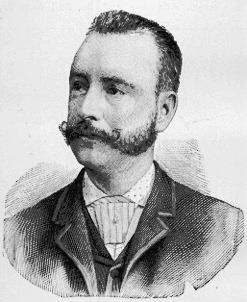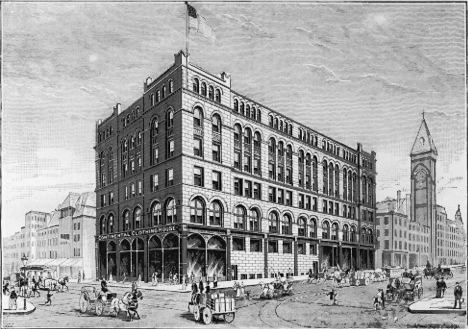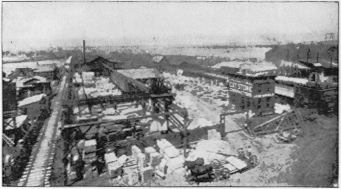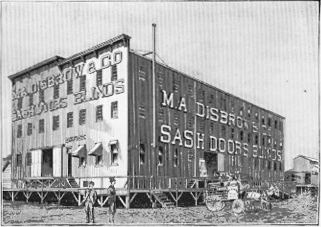|
OMAHA
ILLUSTRATED.
of Nebraska." The company for the
carrying out of this grand project having been organized, a
dispatch was sent on the morning of December 2, 1863, from
headquarters in New York, to Peter A. Day, the engineer at
Omaha, to begin work. This news created the wildest
enthusiasm, and it was determined to "break ground" that
very day near the old ferry landing. After prayer by the
Rev. T. B. Lemon, the first earth was removed by
|
[No man is
better known in the Omaha real estate field than W.
G. Albright, who, in a remarkably short period, has
worked himself to the front rank. He was born at
Fort Madison, Iowa, January 29, 1855, and began his
business life at the early age of fourteen. His
first experience was in the capacity of clerk in
his father's dry goods store at Fort Madison. After
acquiring a thorough knowledge of the business, he
was admitted as a partner and continued as such for
several years. In 1879 he engaged in the
|
|
fire insurance business, in which he was quite
successful. Mr. Albright came to Omaha December,
1885. He saw the wonderful improvements and strides
of progress that were being made by Omaha, and he
became convinced that there was nothing that could
return larger and quicker profits than investments
in real estate, which was steadily advancing.
"There is a tide in the affairs of men which, taken
at the flood, leads on to fortune." So thought Mr.
Albright, who, although he did not have a dollar
for investment, launched forth with the tide on
February 15, 1886. He met with success from the
very start. Organizing a syndicate, he made his
first venture in the purchase of Albright's Annex
in August, 1886. This tract of land, adjoining
South Omaha on the south, was platted, recorded and
sold at auction by Mr. Albright within ten days
after its purchase. This was the first successful
real estate auction ever held in the State of
Nebraska. The
|

W. G. ALBRIGHT.
|
next purchase made by Mr. Albright consisted of
280 acres, now known as Albright's Choice. He
bought this property in October, 1886, and his
first sale in the Choice was made in January, 1887.
Within six weeks after that he sold $250,000 worth
of this property, and one day he sold $40,000
worth. Unlike the majority of real estate men who
lose interest in an addition after selling a large
portion of it, Mr. Albright has continued to exert
every effort to build up and improve the property
which he has put upon the market. He was mainly
instrumental in the extension of the South Omaha
dummy line and the erection of the handsome depot
in the center of the Choice, which is now the
terminus of the dummy line and known as Albright
Station. This station has nineteen daily passenger
trains. He also located the Omaha Carriage and
Sleigh Company on the Choice. This company has put
up fine buildings and will employ two hundred and
fifty men. What
|
|
was one year ago a farm, is to-day a thriving
suburb of South Omaha, having a population of seven
hundred. Over one hundred handsome cottages and
numerous business buildings have been erected
during this time. In addition to these two big
ventures -- the Annex and the Choice -- Mr.
Albright has done a general real estate business on
an extensive scale. Within two years he has risen
from the rank of an almost penniless stranger to
the position of the leading real estate man in
Omaha, and all by his own efforts. He has one of
the handsomest offices in the city, as well as a
branch office at Albright, and he employs a large
force of intelligent, competent and energetic men.
In the brief period of one year, Mr. Albright has
established a splendid business reputation and has
acquired a fortune.]
|
Governor Saunders and Mayor Kennedy of Omaha, and Mayor
Palmer of Council Bluffs, assisted by Augustus Kountze,
Engineer Day, George Francis Train, Dr. Atchison and others.
Artillery salutes were fired, and the crowd cheered
themselves hoarse. Speeches were made by Governor Saunders,
Mayor Kennedy, Dr. G. C. Monell, Hon. A. J. Poppleton, A. V.
Lannier, George B. Lake and George Francis Train. "The
President of the United States shows his good judgment,"
said Mr. Train in the course of his remarks, "in locating
the road where the Almighty placed the signal station, at
the entrance of a garden seven hundred miles in length and
twenty broad." Mr. Train predicted that the Union Pacific
would be completed before the year 1870. This was a little
too much for the audience to believe, and many laughed at
him. He also said that in twenty years Omaha would
have
[98]
|



